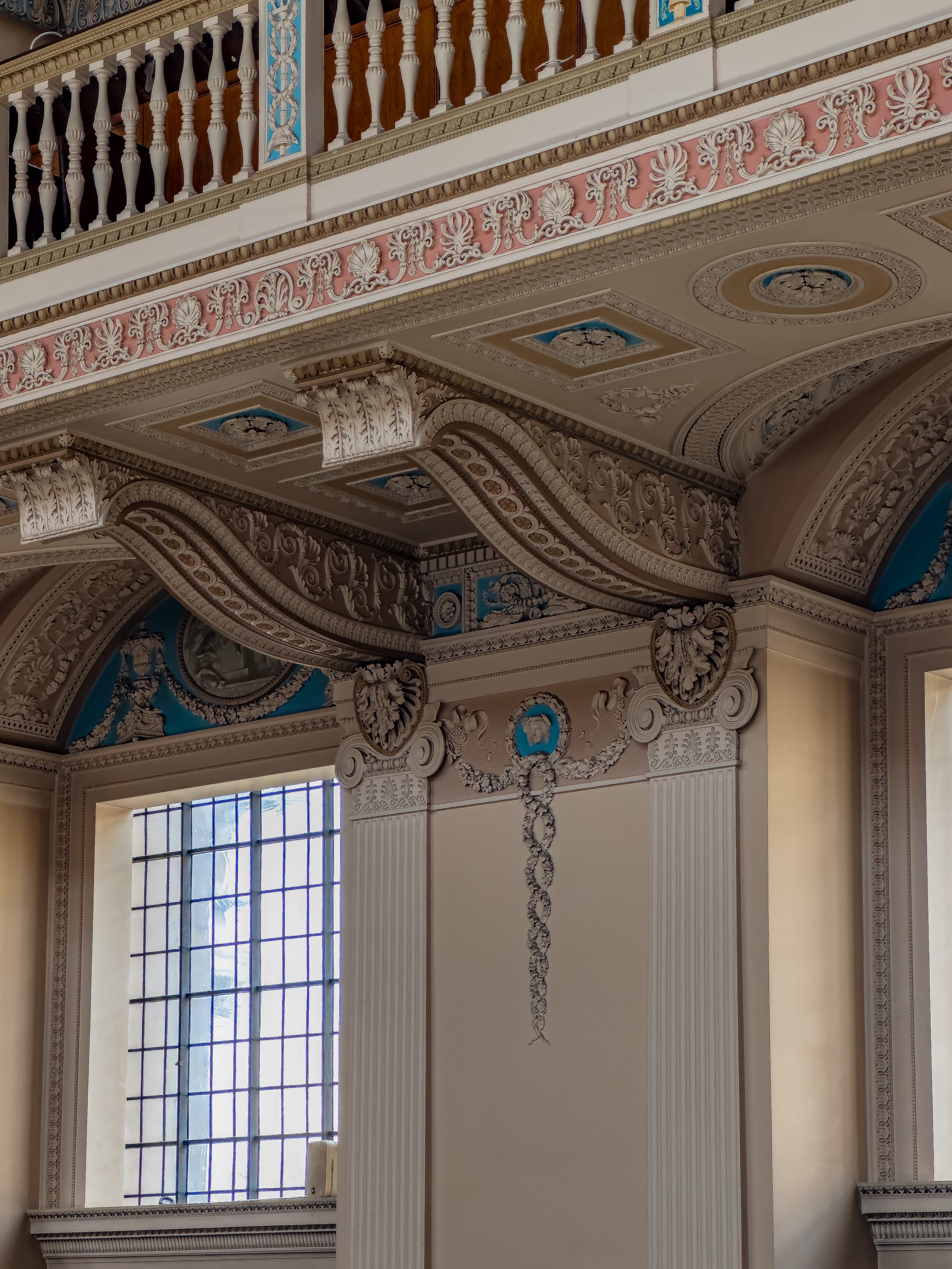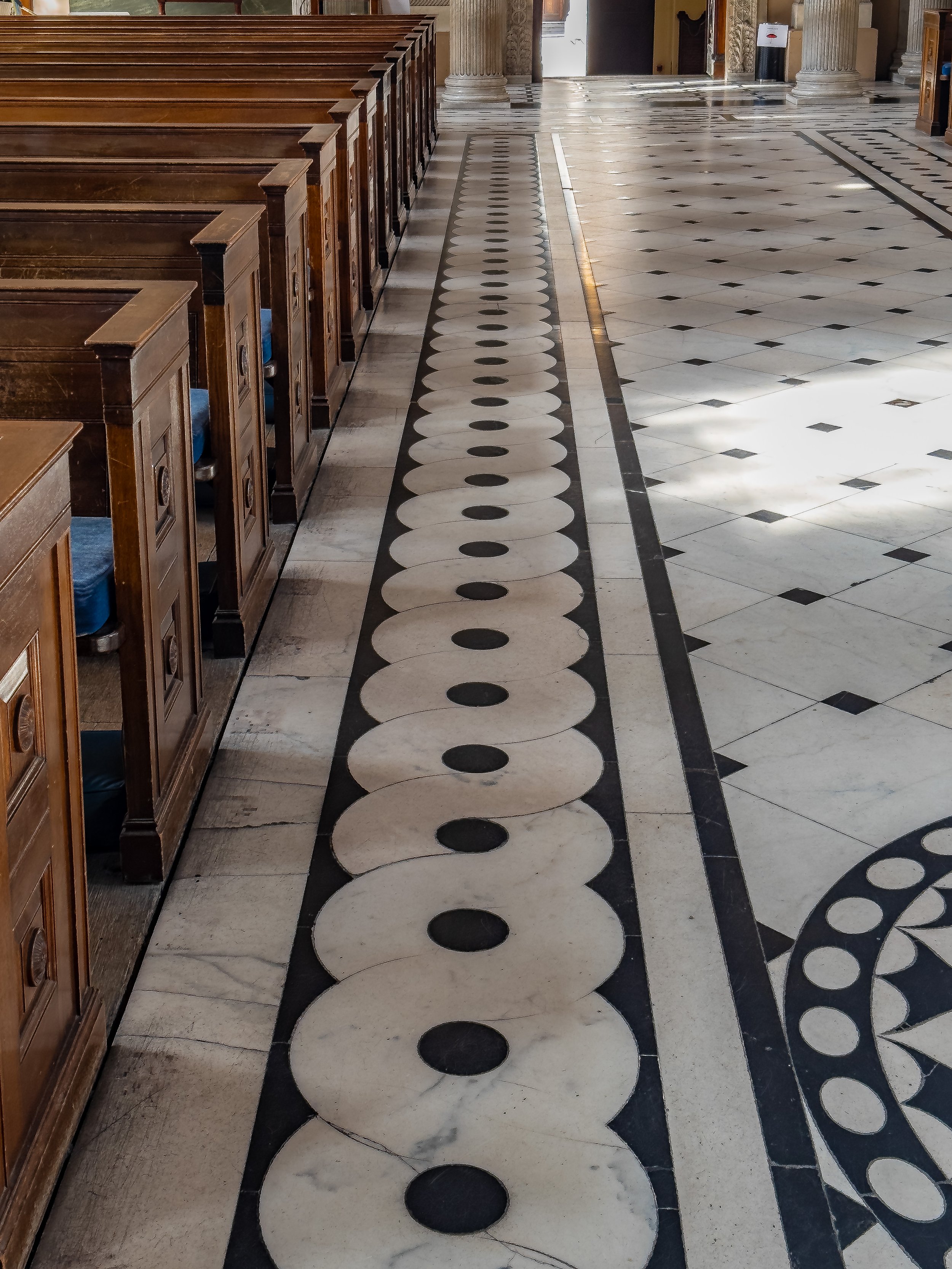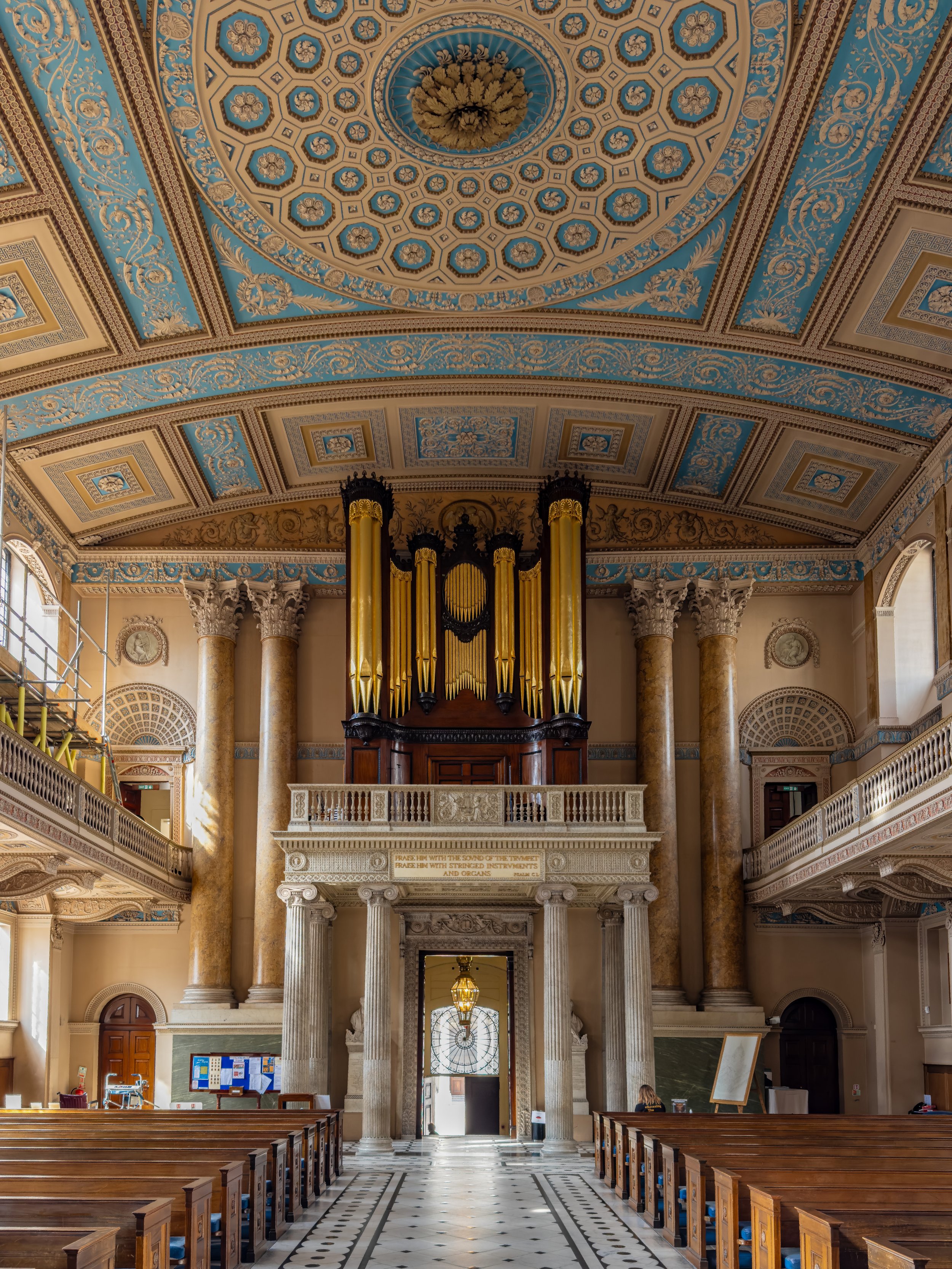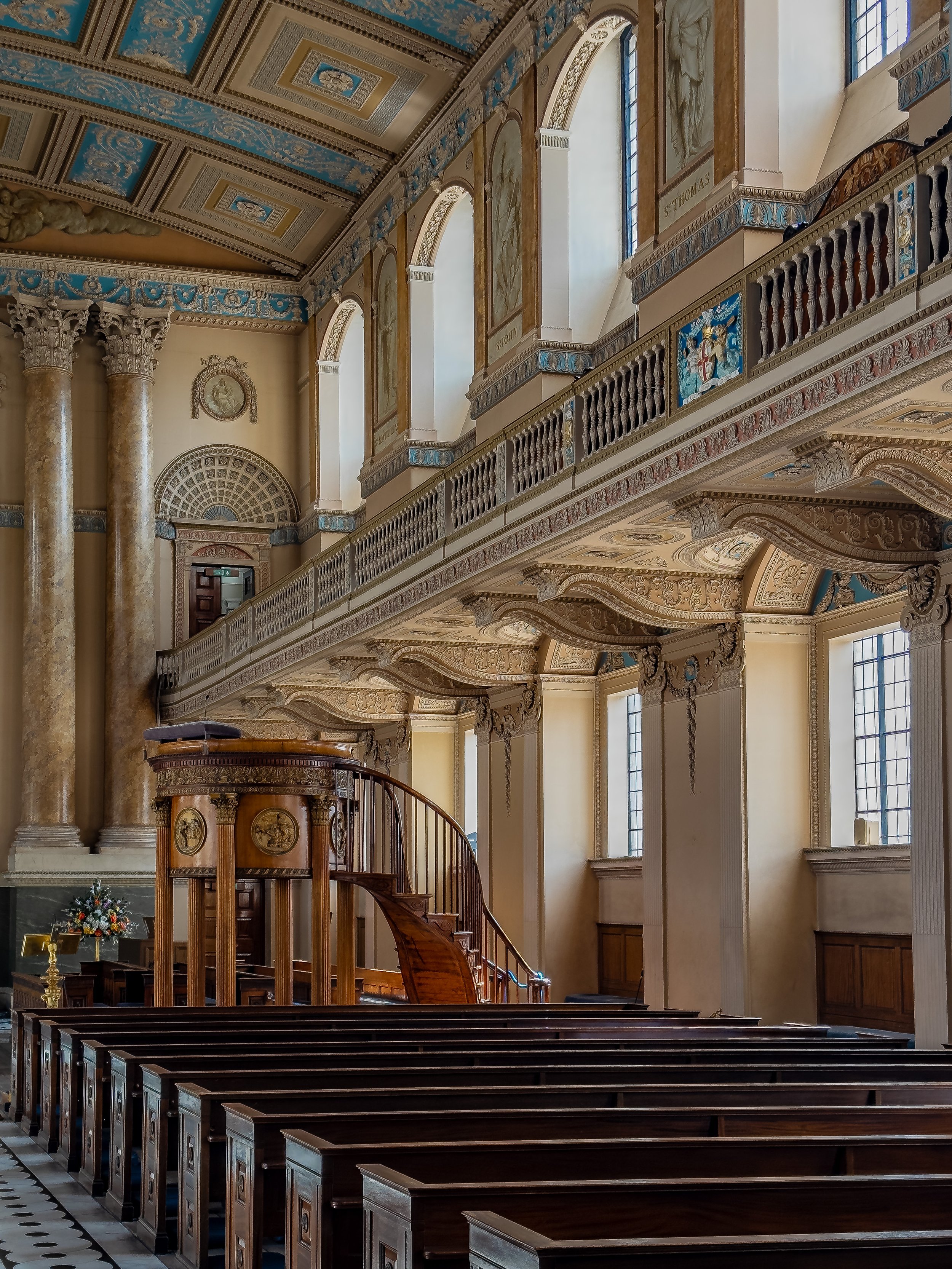
The Chapel of St. Peter & St Paul Greenwich
The Royal Naval College Greenwich Chapel has a rich and fascinating history. It was designed by Sir Christopher Wren and completed in 1752. The chapel was originally intended as a place of worship for the officers and men of the Royal Hospital for Seamen, which was located nearby.
The Chapel of St Peter and St Paul in Greenwich has a rich history that can be traced back to the 15th century. Originally built as a chapel for the Palace of Placentia, the chapel was used by royalty for weddings, christenings, and other important events.
In the early 16th century, King Henry VIII took over the Palace of Placentia and the chapel became part of the royal estate. During this time, the chapel was extensively renovated and expanded, with the addition of a nave and tower.
Links to the Navy with designs of anchor ropes.
Over the years, the chapel has been the site of many important events. It was here that Admiral Lord Nelson lay in state after his death at the Battle of Trafalgar in 1805. The chapel also played a significant role during World War II, serving as a center for the Royal Navy's chaplains.
A fine example of work by Samuel Green, the leading organ builder of his day. Completed in 1798 and the largest he ever built.
Today, the chapel is open to the public and is a popular tourist attraction. Visitors can admire the beautiful architecture and learn about the history of the Royal Naval College and the Royal Hospital for Seamen. The chapel is also used for special events, including concerts and weddings.
Chapel Ceiling.
Due to the amazing craftsmanship the acoustics are said to be amazing. It was designed by John Papworth in a neo classical design. It’s plastered in a light blue and cream following a Wedgwood inspired colour scheme.







